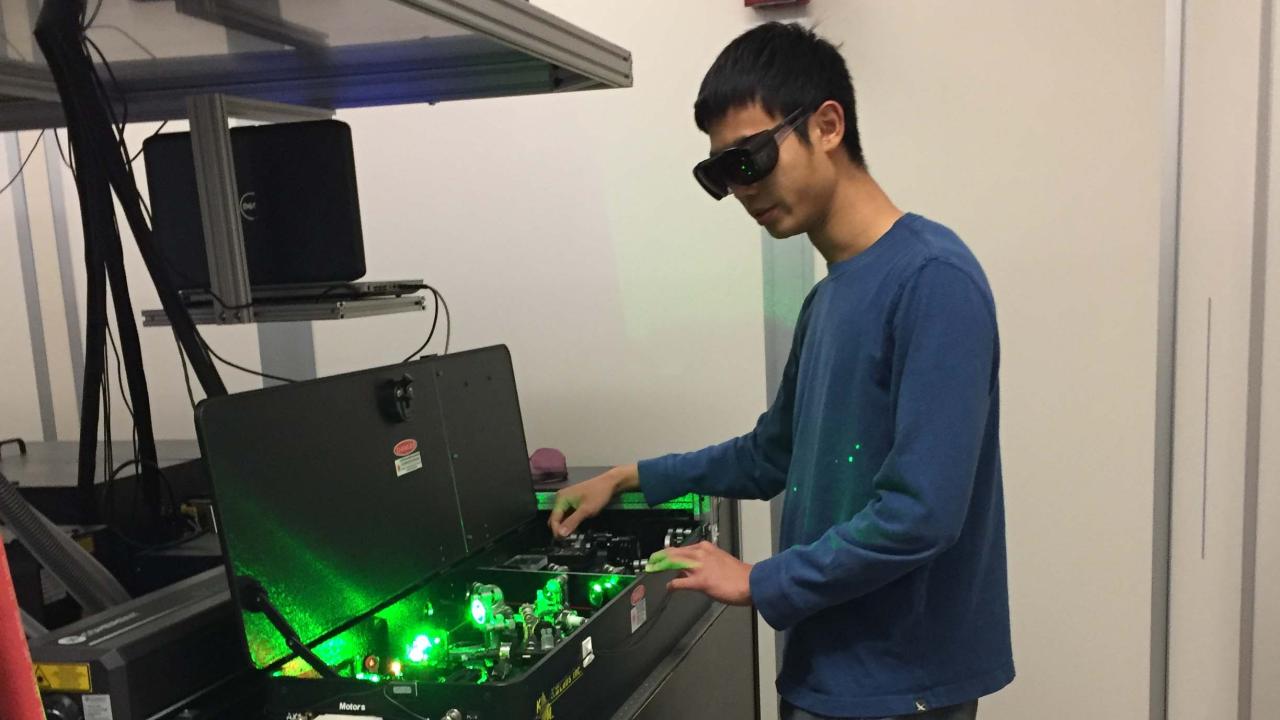Shitong Zhao ‘19 is the lead author of an article published in Physical Review A. The article, entitled “Strong-field-induced Bond Rearrangement in Triatomic Molecules,” is a comparative study of how an intense laser pulse can break molecular bonds in a manner that leads to the creation of new molecules. By comparing this process in similar molecules, the researchers hope to better understand how chemical reactions occur under these exotic conditions. Increasing this understanding is a precursor to using laser pulses to manipulate chemical behavior at a microscopic level.
The research effort is part of a longstanding collaboration between the physics departments at Augustana University and Kansas State University (KSU). Since 2004, many Augustana students have traveled to KSU for experiments to take advantage of the world-class facilities for short, intense laser pulses. Zhao is the 23rd Augustana student to co-author a peer-reviewed research article in atomic, molecular and optical physics during the last 15 years. Out of 14 articles produced in this time with undergraduate co-authors, Zhao is the fifth student who has been the lead author.
“Shitong has consistently performed outstanding work in the classroom during his time at Augustana,” said Dr. Eric Wells, Augustana physics professor. “Through collaborations like the one with KSU, the caliber of opportunities that we’re able to offer our students rivals much larger schools. But our careful mentoring, small class sizes and liberal arts core give our students unique opportunities that are hard to find elsewhere.”
Zhao, who graduated with majors in physics, chemistry and mathematics at Augustana, is originally from Beijing, China. He is a winner of the 2018 Rossing Physics Scholarship, given to outstanding physics students attending an ELCA college. Following graduation, he will pursue a Ph.D. in applied physics at Cornell University in Ithaca, New York.
The present research was funded by National Science Foundation grant PHYS-175777 and by the Chemical Sciences, Geosciences, and Biosciences Division, Office of Basic Energy Sciences, Office of Science, U.S. Department of Energy under grant number DE-FGO2-86ER13491. The PULSAR laser was provided by Grant No. DEFG02-09ER16115 from the same funding agency.
Physical Review A publishes important developments in the rapidly evolving areas of atomic, molecular, and optical (AMO) physics, quantum information, and related fundamental concepts.
